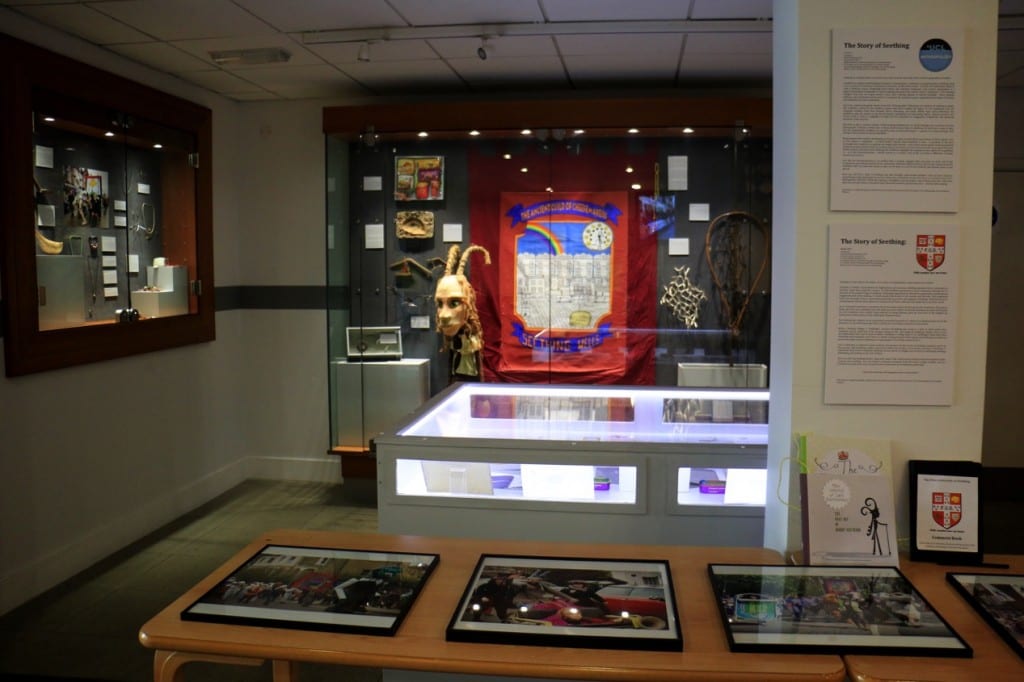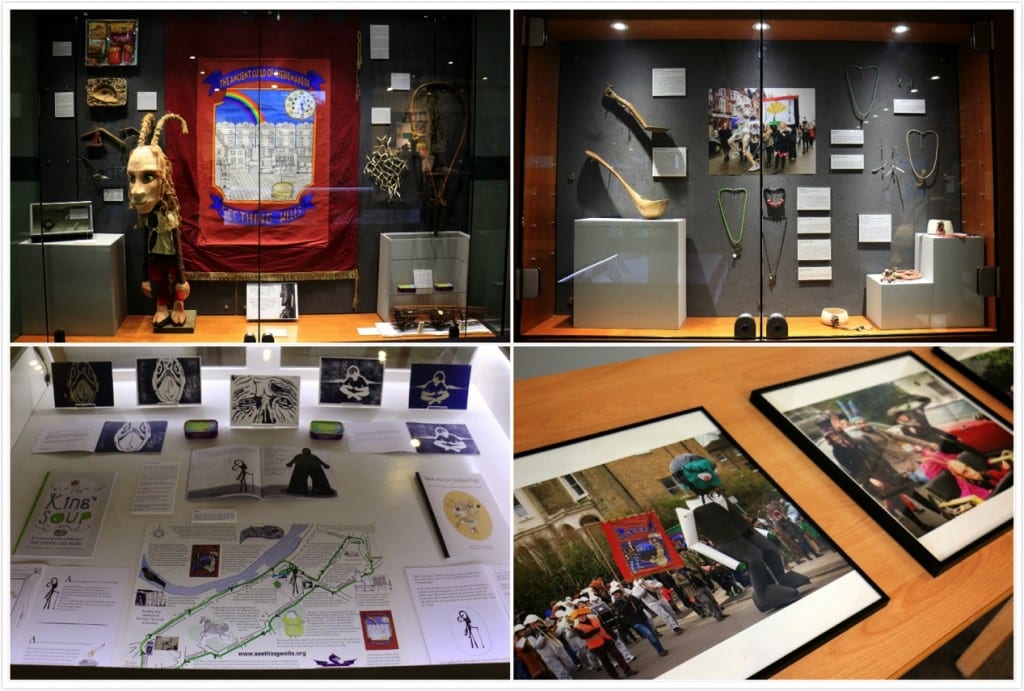The Story of Seething: The Tale of Things
Written by Nikki Lan Xiao, MA Material and Visual Culture, UCL Anthropology
A new exhibition of “The Story of Seething” has been set up in the UCL Anthropology department foyer. The artefacts on display consist of objects coming from both Seething and the UCL Ethnographic Collection. They were matched into pairs according to their similarities in form or function, and their coherence in underlying meanings.
Seething is the field site of David Jeevendrampillai, PhD candidate of the department. However, the “site” is not what we typically understand as a physical place with geographic boundaries, but is rather a state of mind. Seething was created as a virtual village by a group of community enthusiasts who live in Surbiton, South West London (www.seethingwells.org). In searching for the sense of togetherness and common identity, the community constructed myths, stories and folklore of Seething in accordance with the local history and landscape of Surbiton. Throughout the years, creativity has been central in the development of a sense of community, which is partially demonstrated through the artefacts of Seething heritage in the exhibition.
However, the exhibition is not just a showcase of Seething heritage. In pulling together objects from the community and the UCL Ethnographic Collection, the main idea behind the exhibition is to draw attention to the objects themselves, and to see their productive roles in the practices of being human. The most interesting thing about pairing up the objects is that however radically different the historical contexts or cultural backgrounds are, there exists some coherence in the objects themselves.
The most eye-catching object of the exhibition is the figure of the goatman Lefi Ganderson, the legendary ancestral character of Seething folklore. He holds a central place in all major events of Seething. He is talked to, addressed in common speech and people often invoke his approbation for outcomes to which he’d have them aspire. To pair with Lefi, we have chosen the Poutokomanawa, a taonga from Maori culture. The ancestral figure holds a central place in Maori custom. Within the meeting house, he would have been greeted, offered food, and been involved in the communal gatherings of the tribe. Though vastly different in shape, history, and culture, the two objects each contain spiritual meanings to their communities. It is through the communicative practices with the figures that both communities are constantly reproducing themselves.
There are other interesting matches shown in the exhibition. Below is a full list of the objects on display:
The exhibition is not just presenting the connections to an audience; it is also trying to inspire alternative ways of understanding objects beyond their form and context and to discover fresh ideas to link seemingly distinctive objects together, the process of which I enjoyed tremendously when I had the chance to pick out some of the objects from the Ethnographic Collection. And it is particularly interesting to see how each pairing is made from different perspectives.
I recall the most challenging one for me was to find an object to pair with the Past Cast, which is the original Seething Pasty populated in its early mining industry. Initially, I hoped to find cookware of some tribal community to indicate their similar usage but failed to find one. However, this turned out to be an opportunity for me to look at the objects from a different angle. The fast-food cardboard model selected is a kind of paper commodity used for burial rituals in China. Though its function lies with the past, it also represents the lifestyle of modern consumer society reflected upon food. Instead of bringing homemade food to work like the ancient Seething miners, nowadays it is more common to buy ready-made food. The consumer society provides people more choices of food, as well as the choice of time-making. As less time is spent on making the food, likewise, less time is spent on thinking about what’s inside the food that people are eating.
It is astonishing how objects themselves can offer extensive knowledge and effects, which is exactly what the exhibition wants to achieve: to read the tale of things through the Story of Seething.
The exhibition is curated by: Robin Hutchinson, Simon Tyrrell, Dr. Timothy Carroll, David Jeevendrampillai, Nikki Lan Xiao, Delphine Mercier and Myriam Perrot. The exhibition will last for three months until April.


